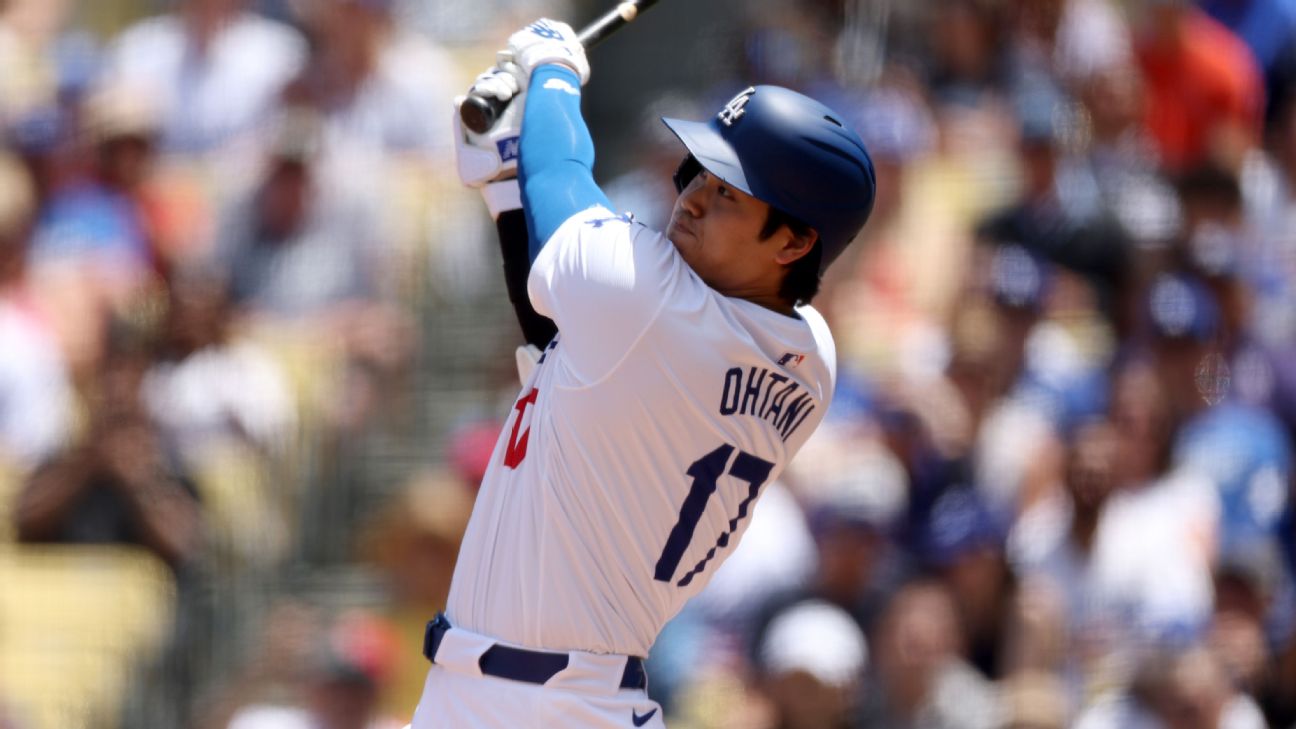After signing a record contract with the Los Angeles Dodgers, Shohei Ohtani and his 54 home runs for the season were on full display as he went on to win his third MVP award.
But only a relatively few people witnessed his “first official home run” when he was a student at Hanamaki Higashi High School in Iwate Prefecture.
That occurred in May 4, 2011.
Ohtani’s team was playing Hanamaki Minami Senior High School in the second round of the regional qualifying round for the spring Iwate prefectural tournament.
Katsutoshi Takahashi was the coach of Hanamaki Minami at the time, and his eyes widened when he saw the lineup sheet of heavily favored Hanamaki Higashi.
Ohtani, a second-year student, was already creating a buzz in the prefecture with his nearly 190-centimeter frame, his 140-kph fastball and his mighty swing.
Hanamaki Minami, meanwhile, was a public school that had never played in the national Koshien high school baseball tournament before.
Takahashi dreaded seeing Ohtani penned in to start the game as the pitcher while batting third in the lineup for the game at Hanamaki Stadium. The coach realized it would be a very difficult game for his team.

Hanamaki Higashi wasted no time getting on the scoreboard.
With one out and a runner on second base in the top of the first inning, Ohtani smacked a hit to left-center field to knock in the first run.
In the bottom of the first inning, Ohtani took the mound and threw strike after strike.
Ohtani led off the third inning with a double. Hanamaki Higashi kept hitting, and Ohtani again found himself in the batter’s box for the second time in the frame.
With one out and runners on first and third, the pitcher plunked Ohtani on his right elbow.
Takahashi said he was relieved to see that Ohtani was not in pain. But after Ohtani removed his elbow pad and trotted to first base, the umpire ruled the pitch was not a dead ball because Ohtani did not try to avoid it.

The score was 10-0 at this point.
Ohtani appeared disappointed that he could not get on base, Takahashi recalled.
Back in the batter’s box, the left-hander readjusted and blasted the next pitch over the right-field fence.
The three-run home run was the first dinger by Ohtani in an official game.
Takahashi said the ball “seemed to fly away forever.”
Ohtani hit for the cycle in the game and had five RBIs.
The game ended 19-0 in five innings under a “mercy rule.”
Ohtani’s performance on the mound was also rather noteworthy.
He threw a no-hit, no-run game with 11 strikeouts, including seven in a row.

The only baserunners he allowed were one batter who was hit by a pitch and another who made it to first after the catcher couldn’t catch the third strike.
Takahashi said some teams had tried to counter Ohtani’s hitting by putting four players in the outfield.
But when Ohtani faced such a defensive shift, he would hit the ball in the infield where there was no fielder, Takahashi said.
“Ohtani always put the team’s victory first and chose the most probable method,” Takahashi recalled. “That attitude did not change back then, and it has not changed now.”
Thirteen years have passed since that first official home run.
Ohtani, 30, is now considered perhaps the best baseball player the world has ever seen.
“Iwate used to be a ‘weak prefecture’ in high school baseball,” Takahashi said. “But nowadays, it is no longer unimaginable for children here to become the best in the world. What can be imagined can be realized.”
Takahashi is currently the principal at Morioka Commercial High School, a public high school in the Iwate prefectural capital of Morioka.
He said he is still involved in high school baseball and hopes to one day see the “next Shohei Ohtani.”






